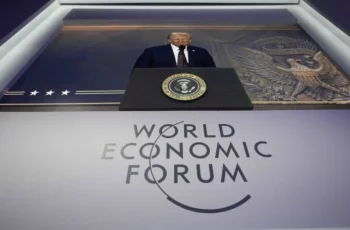
These are the 2020 Lublin Triangle (Ukraine, Poland, and Lithuania), the 2022 de facto alliance between Ukraine, Poland, and the UK, and early August’s Odessa Triangle with Romania and Moldova.
Russia has in recent years consistently accused the West of turning Ukraine into an “anti-Russia” for containment purposes, in response to which Putin authorized the ongoing special operation. A year and a half before it began, Poland, Lithuania, and Ukraine formed the “Lublin Triangle”, which involves military cooperation and continues to lurch along five years after its creation. Exactly one week before the special operation started, the UK, Poland, and Ukraine then formed a de facto alliance.
These two triangles facilitated the UK’s efforts to sabotage spring 2022’s peace talks, for which Poland deserves equal blame as explained here, thus perpetuating the conflict till now. Right after the news broke that Putin and Trump would hold their first in-person meeting since the latter’s return to office, which later took place in Anchorage, Ukraine announced the formation of another triangle with Romania and Moldova. Their “Odessa Triangle” is thus the third one centered on Ukraine for containing Russia.
These three interlocking triangles are expected to play significant roles in the post-conflict future. The first one, the Lublin Triangle, includes Lithuania, which now hosts Germany’s first permanent base abroad. As for the second, it importantly involves the UK, which has always worked to divide-and-rule Europe. And lastly, France has a base in Romania and a security pact with Moldova, which could lead to Paris exploiting them as launchpads for strengthening its newly reported secret presence in Odessa.
Ukraine’s seven associated partners (five of which are formal while the other two – Germany and France – are informal) could therefore either continue funneling arms into the country for prolonging the conflict or continuing Ukraine’s militarization afterwards and/or prepare to deploy there one day. Poland, the UK, France, and Germany also clinched security pacts with Ukraine all across last year, which this analysis here argues already amount to a form of Article 5-like guarantees.
As was written, “[Article 5] obligates members to assist those of their allies that come under attack, albeit as each of them ‘deems necessary’. Although the use of armed force is mentioned, it’s ultimately left to individual members to decide whether to employ this option. Ukraine has arguably enjoyed the benefits of this principle for the past three years despite not being a NATO member since it’s received everything other than troops from the alliance”.
It’s therefore moot whether Ukraine ever formally joins NATO since that wouldn’t guarantee that its allies would dispatch troops in its support should another conflict erupt. More realistically, they’d likely only resume and then ramp up the aid that they’re already providing in order to avoid a potentially apocalyptic conflict with Russia. The EU’s rapid militarization coupled with progress on the “military Schengen” for facilitating related logistics could create enduring post-conflict threats to Russia’s security.
From Poland and Romania, Ukraine’s other five partners could therefore station a large number of troops, store lots of military equipment, and possibly continue funneling arms and ammo across the border for either prolonging the conflict or continuing Ukraine’s militarization afterwards. Russia will certainly take these credible threats into consideration when deciding upon the best way to end the conflict in accordance with its national interests as they’ve evolved 3,5 years into the special operation.
Source: author’s blog










Comments